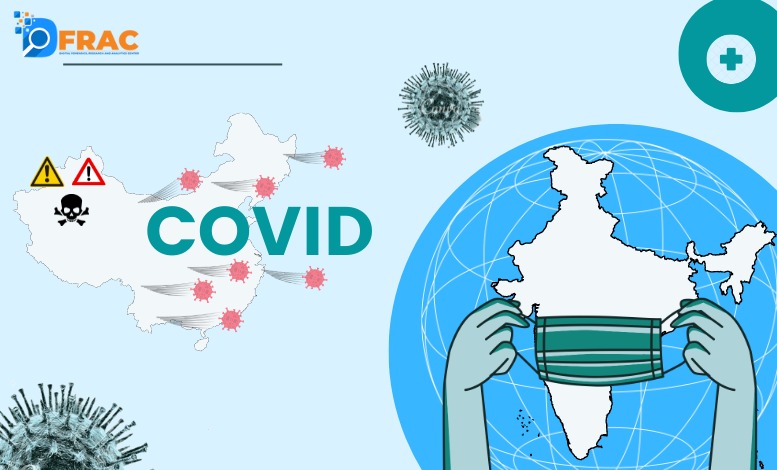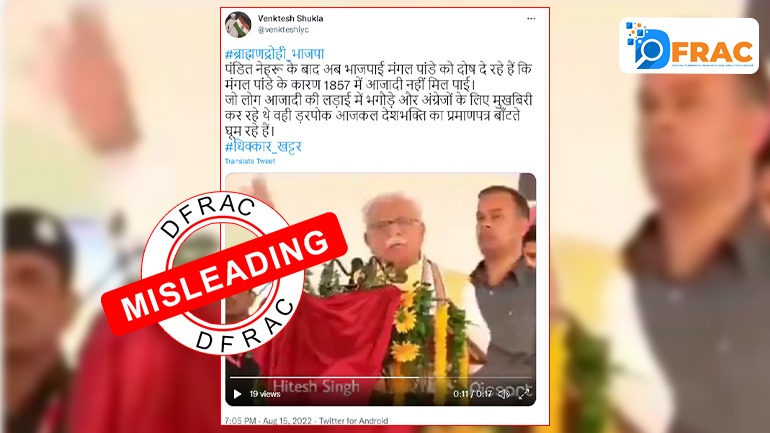What India can do now is ensure that the country does not repeat the mistakes that its leadership made at the beginning of the outbreak in 2020 and thereafter. Every point of entry into India should be closely monitored. Strategies to focus on and combat new infections and related health issues must be implemented immediately, as well as a comprehensive strategy to deal with all aspects of the crisis.
The rest of the world is at risk from the new COVID-19 outbreak in China. Mathematical models predict a million or more deaths within 90 days from now, in early 2023. Epidemiologists estimate that 60 percent of China’s population and 10 percent of the world’s population are likely to be infected. This new crisis could shake the world, and India too cannot escape it, as we experienced after the Wuhan outbreak three years ago. Sudden jumps in new infections have also been seen in Japan, South Korea, Brazil, and the US. On December 22, four patients of the new COVID-19 sub-variant were found in India.
What is happening now in China has disrupted global supply chains. Most likely to be disrupted are those on which many Indian industries depend for production, including but not limited to healthcare-related industries.
India should take note of the very rapid spread of the new variant of Omicron which has started wreaking havoc in Beijing and may soon affect the rest of China. After the restrictions were relaxed on December 7, it took only 10 days for such a situation to come. This has created a stir in the purchase of food items, cold protection equipment, medicine, and other health-related things. No one knows exactly what is happening there because the government there has stopped full reporting of daily infection data and deactivated the COVID-19 tracking app.
The information coming out from China is indicating the challenges ahead for India. About 90 percent of people there have already received a double dose of vaccines against the coronavirus, while about 50 percent have received a third dose of a booster. Of those 60 years and older, 69 percent have received booster shots. Despite this, the spread of the new infection could not be controlled. There is no room available in health facilities, cemeteries, and crematoriums. Several new variants are also likely to emerge in the coming months. India needs to be vigilant on the vaccination front and on the deadly new Omicron variant that destroys immunity.
In India, the Union Health Ministry has already issued alerts, advisories, and instructions to all states and union territories. States and Union Territories have been asked by the central government to do genome sequencing by issuing notices. Union Health Secretary Rajesh Bhushan has said that such an exercise would enable the timely detection of new COVID-19 viruses, if any, circulating in the country and facilitate taking necessary public health measures.
India has so far been able to contain the transmission of Coronavirus by focusing on the five strategies of ‘Test-Track-Treat-Vaccination and Covid Appropriate Behavior’ which is now around 1,200 cases weekly. In the last 24 hours, 129 new cases of infection have been reported in the country and one death has occurred. A lot of relaxation has been given at many places, in which wearing a mask is also not mandatory.
Several top government officials held a high-level meeting with experts to chalk out a strategy to prevent any fresh outbreak of COVID-19 infection. Everyone in these meetings was seen wearing a mask, although it is not mandatory as per the government’s protocol.
Six points have been identified which include a strategy to contain the arrival of cases at international and domestic airports and other entry points into the country; setting guidelines for travelers traveling from abroad and consulting experts on the new variant. Dr. NK Arora, Chairman of the COVID-19 Working Group, has said, “It is an important thing that we keep a close watch on the Chinese situation. But I would say that there is nothing to panic about. No need to worry much. Our system is very alert, we need to be very alert.”
Meanwhile, the Union Health Minister has written a letter to Congress leader Rahul Gandhi, asking him to ensure that Covid norms are followed during his Bharat Jodo Yatra, or he will be allowed to travel ‘in the interest of the nation’. The next stage should be postponed. It is unfortunate, however, that the concern for ‘national interest’ is very slow in the more important strategies to deal with the menace.
For example, there are only a little over 50 laboratories nationwide that do genome sequencing under the Insacog network. The latest advisory to states and union territories has not come up with the increase of labs. Secondly, only selected samples are being sent for sequencing. Random testing of international travelers is being done and the detection of positive cases among them is about 2%. Samples are collected only from designated locations, which also include cluster-outbreak locations in the community. These laboratories are also testing for viral RNA in the sewage system. Obviously, we now need to rapidly increase the number of laboratories.
As far as increased surveillance is concerned, there has been no change in protocol for international arrivals so far. India is still under the old protocol, which last month scrapped the requirement of a negative RT-PCR or full vaccination certificate. Such a slow decision may not stop the Chinese virus from spreading rapidly in India, as nothing has been done to stop the entry of new infections into the country despite a nightmare of a fortnight in neighboring China.
Indians and India should take note of the fact that the current surge in infections is linked to the Omicron sub-variant BF.7, a nomenclature given to BA.5.2.1.7, which is already detected by the INSACOG network. Already happened.
Dr. Randeep Guleria, former director of AIIMS, has said that during almost three years of the pandemic, we are in a situation where there has been high natural infection, and the coverage of vaccines is also high. He said that India may not see a situation like China.
Whatever the case, India cannot afford to slack off on preparations. Covid appropriate behavior must be re-established before we fall into a new nightmare that could prove disastrous. India and the world can’t let their guard down and keep focusing to make the health services delivery system robust.





